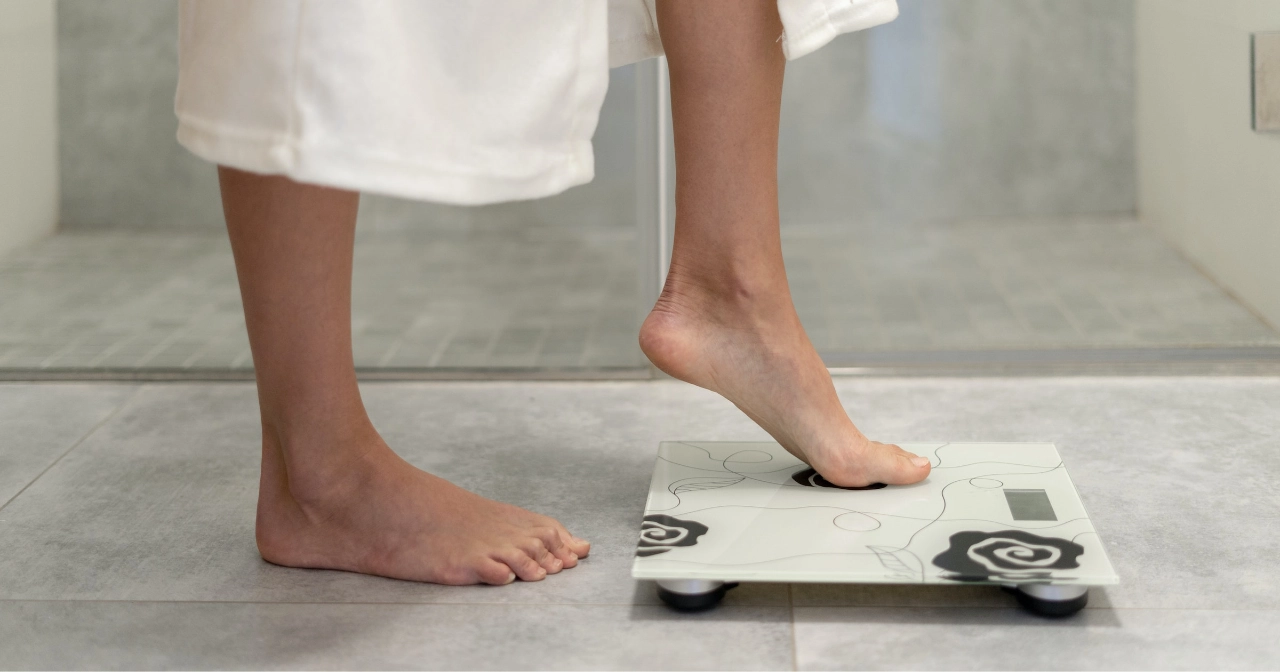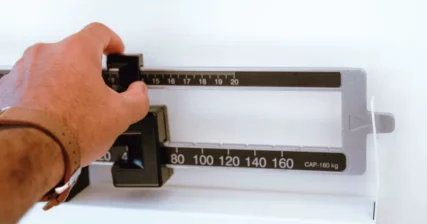Understanding and monitoring your body composition is a cornerstone of embarking on a healthier, more fit, and active lifestyle. Unlike the simplistic method of tracking weight, evaluating body composition provides a holistic view of one’s fitness. It delineates between muscle, fat, bone, and water percentages, offering a more nuanced insight into the changes occurring in the body as one progresses through their fitness journey.
The conventional way of getting your body composition analyzed might involve visiting a medical or fitness professional. However, with the advent of cutting-edge technology, an array of reliable and user-friendly tools have emerged, enabling individuals to monitor their body composition from the comfort of their home. This not only saves time and resources but also allows for a more consistent tracking, which is instrumental in staying motivated and making informed decisions towards achieving one’s fitness goals.
The efficacy of at-home body composition monitoring has been underscored by numerous scientific studies. For instance, a study published in the International Journal of Exercise Science found that self-monitoring through body composition analysis can significantly contribute to an individual’s understanding and management of health and fitness.1Dale, R. A., & Jensen, C. (2018). Evaluation of a portable body composition analyzer for field assessment of body fat. International Journal of Exercise Science, 11(6), 847–855.
In this comprehensive guide, we will delve into the various at-home methods available for monitoring body composition, shedding light on how each method works, its pros and cons, and recommending the best brands and tools for each method. The aim is to empower you with the knowledge and resources necessary to take charge of your fitness journey in an informed and convenient manner.
Exactly, all the references will be listed at the end of the guide in the References section. Now, let’s move on to the next section “Understanding Body Composition”.
Understanding Body Composition
Body composition refers to the proportion of fat and non-fat mass in your body. It provides insight into your fitness level and overall health status. Understanding body composition goes beyond the simplistic narrative of body weight and delves into what your weight actually consists of – be it muscle mass, fat mass, bone mass, or water content. This distinction is crucial as it helps in accurately evaluating your fitness progress and health risks.
There are several factors that underscore the importance of having a well-rounded understanding of body composition:
- Health Assessment: Body composition analysis provides a more nuanced understanding of health as compared to mere weight. It helps in identifying risks associated with high fat mass like cardiovascular diseases, diabetes, and other metabolic disorders.
- Fitness Progress Tracking: Monitoring changes in muscle mass and fat percentage is instrumental in evaluating the effectiveness of your fitness regimen. It provides clear feedback, allowing for timely adjustments to meet your goals.
- Nutritional Evaluation: By understanding how your body composition changes in response to dietary habits, you can make informed nutritional choices to support your fitness and health objectives.
- Motivation and Goal Setting: Seeing tangible changes in body composition can serve as a powerful motivator. It also aids in setting realistic and achievable fitness goals.
Numerous scientific researches underscore the importance of body composition as a superior marker for health and fitness. For instance, a study published in the American Journal of Clinical Nutrition highlights that body composition measures are pivotal in assessing individuals’ nutritional status and health risks.2Gallagher, D., Heymsfield, S. B., Heo, M., Jebb, S. A., Murgatroyd, P. R., & Sakamoto, Y. (2000). Healthy percentage body fat ranges: an approach for developing guidelines based on body mass index. The American Journal of Clinical Nutrition, 72(3), 694–701.
Bioelectrical Impedance Analysis (BIA)
BIA technology estimates body composition by sending a small, harmless electrical current through the body. This current travels quickly through water and muscle, which have a high water content, and more slowly through fat, which has a lower water content. By measuring the resistance (impedance) of the current, BIA devices estimate the proportion of fat and lean mass.
Pros
- Ease of Use: BIA devices are user-friendly and provide quick results.
- Affordability: They are usually more affordable compared to other body composition measuring devices.
- Portability: Many BIA devices are compact and portable, making them convenient for at-home use.
Cons
- Variable Accuracy: The accuracy of BIA can be influenced by various factors including hydration levels, recent exercise, and meal times.
- Less Accurate for Extreme Body Types: BIA might not be as accurate in individuals with extremely low or high body fat percentages.
Best Bioimpedance Scales
When it comes to BIA devices, brands like Tanita, Omron, and Fitbit offer reliable options. Specifically, the Tanita BC-533 Glass Innerscan Body Composition Monitor and the Omron Body Composition Monitor with Scale are highly regarded for their accuracy and ease of use.
Tanita BC-533
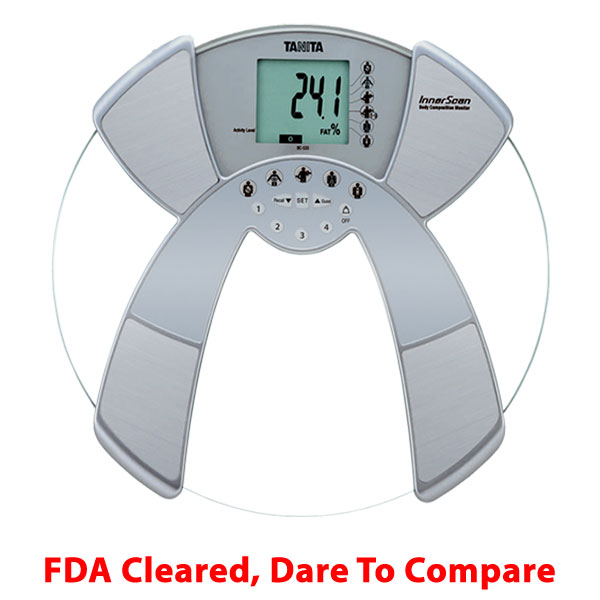
The Tanita BC-533 InnerScan Body Composition Monitor uses FDA cleared Bioelectric Impedance Analysis (BIA) technology in an innovative, circular design, which was designed for people with distinct taste and a passion for personal health.
OMRON BF511
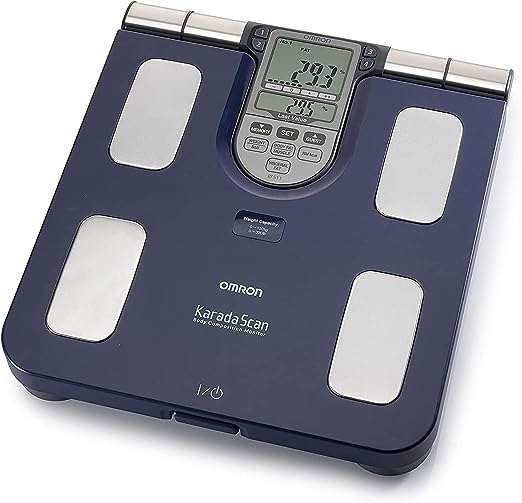
OMRON BF511 is a comprehensive body composition monitor and provides extensive insight in body and visceral fat, skeletal muscle level, your BMI and resting metabolism. It is clinically validated1 and classified as a medical device.
Skinfold Calipers
Skinfold calipers measure the thickness of subcutaneous fat at specific sites on the body. By pinching the skin and fat (but not the muscle) between the calipers, and using standardized methods and equations, you can estimate body fat percentage.
Pros
- Cost-Effective: Skinfold calipers are one of the most cost-effective methods for measuring body composition.
- Portable: They are compact and easy to carry around.
- Historically Trusted: This method has been used by fitness professionals for decades.
Cons
- Skill Required: Accurate measurements require practice and a certain level of skill.
- Potential for User Error: There’s a higher chance of user error compared to other methods.
Best Skinfold Calipers
Accu-Measure and Harpenden are reputable brands known for their precision and durability. The Accu-Measure Fitness 3000 Body Fat Caliper is a popular choice for at-home use due to its simplicity and affordability.
Accu-Measure
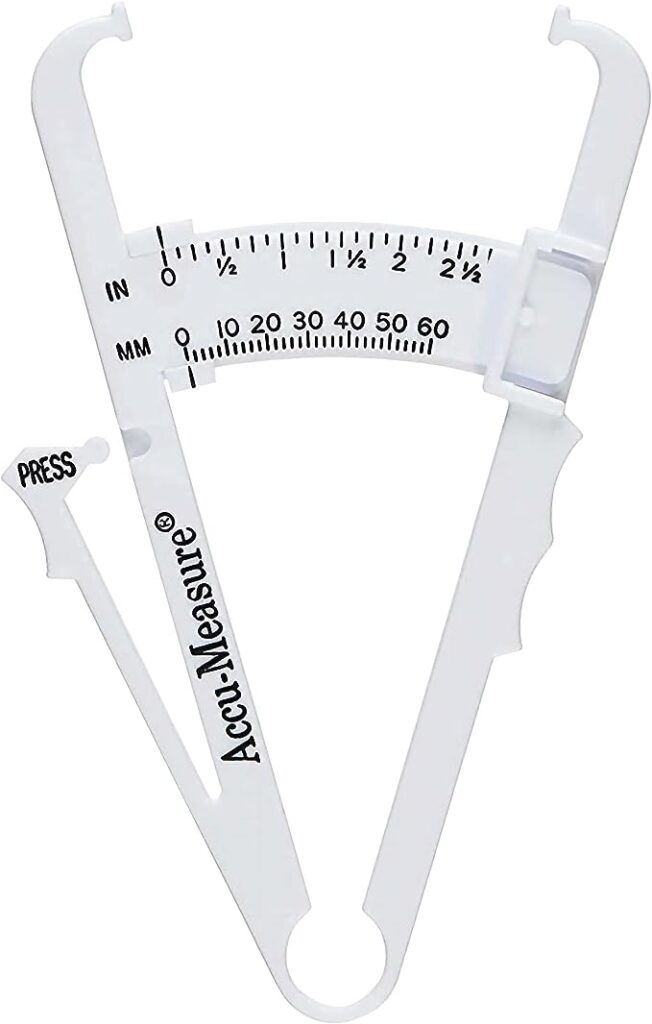
Simple and straight forward, this lightweight and affordable skinfold caliper is great for at-home use. Though it doesn’t have the precision of the Harpenden, it’s accurate enough to let you know if you’re headed in the right direction. And it’s a fraction of the cost.
Harpenden
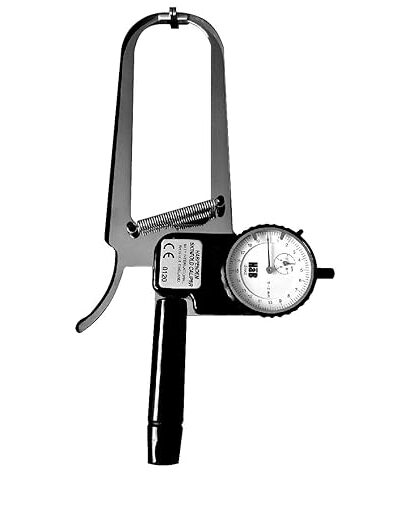
The ultimate in accuracy and precision, the Harpenden skinfold caliper is considered the gold standard. This skinfold caliper is ideal for boutique fitness clubs and private trainers.
Dual-Energy X-ray Absorptiometry (DEXA) at Home
DEXA is a highly accurate method that uses low-level X-rays to differentiate between bone, fat, and lean mass. While traditionally done in medical facilities, there are emerging portable options for home use.
Pros
- High Accuracy: DEXA is considered a gold standard in body composition analysis.
- Regional Analysis: Provides data on body composition in different regions of the body.
Cons
- Cost: The high cost of equipment and scans can be a barrier.
- Availability: Portable at-home options are emerging but are not yet widely available.
Best Brands and Tools: Currently, the market for at-home DEXA is evolving. As of now, professional-grade DEXA machines like those from Hologic and GE Healthcare dominate the market.
Hydrostatic Weighing
Hydrostatic weighing involves submerging the individual in water and measuring their underwater weight. This data, along with the person’s land weight, is used to estimate body fat percentage.
Pros
- High Accuracy: Considered a gold standard in body composition analysis.
Cons
- Inaccessibility for Home Use: Requires specialized facilities and is not suited for at-home use.
Air Displacement Plethysmography
This method estimates body volume by measuring air displacement as the individual sits in a sealed chamber.
Pros
- High Accuracy: Comparable to hydrostatic weighing in accuracy.
Cons
- Cost and Accessibility: High cost and lack of portable options make it less suited for at-home use.
3D Body Scanners
3D body scanners use infrared sensors or structured light to create a three-dimensional model of the body, from which body composition metrics are derived.
Pros
- Visual Feedback: Provides visual representations of body composition changes over time.
- Non-Invasive: A non-contact method that is easy and comfortable to use.
Cons
- Cost: Higher upfront cost compared to other at-home methods.
Best Brands and Tools: The Fit3D ProScanner and Styku are reputable brands offering 3D body scanning technology.
Tape Measure Method
Utilizes circumference measurements at specific body sites to estimate body fat percentage using standard equations.
Pros
- Low Cost: Requires only a tape measure.
- Simple: Easy to perform with minimal training.
Cons
- Lower Accuracy: Less accurate and more prone to user error compared to other methods.
Best Brands and Tools: MyoTape Body Measure Tape is a popular choice for its ease of use.
Myotape
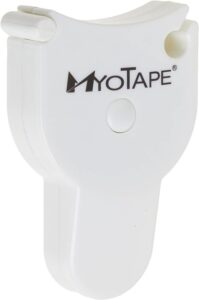
With the MyoTape Body Tape Measure, you can obtain the body measurements you need privately and without help from others. MyoTape includes finger grips on the handles for superior control and ease of use. Push-button retraction and locking feature ensure snug measurement and superior accuracy.
Other Emerging Technologies
New technologies such as smart scales and handheld BIA devices are making at-home body composition analysis more accessible. These technologies continue to evolve, promising better accuracy and ease of use.
Comparative Analysis
When it comes to selecting the right method for measuring body composition at home, several factors come into play. Here’s a comparative analysis based on accuracy, ease of use, cost, and suitability for different individuals:
- Accuracy:
- High Accuracy: DEXA, Hydrostatic Weighing, and Air Displacement Plethysmography are considered gold standards in body composition analysis.
- Moderate Accuracy: BIA and 3D Body Scanners provide a decent level of accuracy, especially with consistent use under similar conditions.
- Lower Accuracy: Skinfold Calipers and Tape Measure Method are prone to user error, resulting in lower accuracy.
- Ease of Use:
- High Ease of Use: BIA, 3D Body Scanners, and Tape Measure Method are user-friendly and easy to use at home.
- Moderate Ease of Use: Skinfold Calipers require some practice to get accurate measurements.
- Low Ease of Use: DEXA, Hydrostatic Weighing, and Air Displacement Plethysmography require specialized equipment and/or professional supervision, making them less practical for at-home use.
- Cost:
- Low Cost: Skinfold Calipers and Tape Measure Method are the most cost-effective.
- Moderate Cost: BIA devices and 3D Body Scanners have a moderate cost.
- High Cost: DEXA, Hydrostatic Weighing, and Air Displacement Plethysmography are on the higher end of the cost spectrum.
- Suitability:
- Broad Suitability: BIA and Tape Measure Method are suitable for a wide range of individuals.
- Specialized Suitability: DEXA, Hydrostatic Weighing, and Air Displacement Plethysmography are more suitable for individuals requiring a high level of accuracy, such as athletes or those under medical supervision.
This comparative analysis aims to provide a clear perspective on the trade-offs involved in choosing a method for at-home body composition monitoring. The right choice would largely depend on individual priorities, be it accuracy, ease of use, cost, or a balance of these factors.
Conclusion
Monitoring your body composition is an empowering step towards taking control of your health and fitness journey. The variety of at-home methods available today make it convenient and accessible to track your progress over time. While some methods offer higher accuracy, others are more cost-effective and easy to use. The choice ultimately depends on your personal goals, budget, and the level of commitment you’re willing to invest in monitoring your body composition. This guide aims to provide a comprehensive overview to help you make an informed decision that aligns with your fitness journey.
